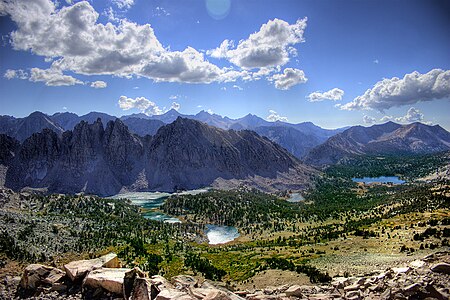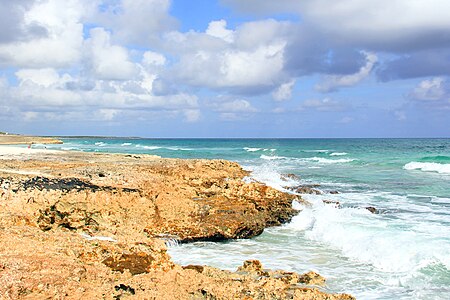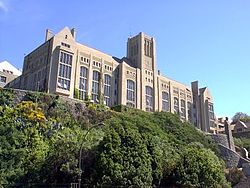User:Korinne/Sandbox1: Difference between revisions
mNo edit summary |
m (→Ethnic groups) |
||
| Line 121: | Line 121: | ||
=== Ethnic groups === | === Ethnic groups === | ||
{{Pie chart | {{Pie chart | ||
| caption = Ethnic Groups in Eldmark | | caption = Ethnic Groups in Eldmark | ||
| Line 146: | Line 142: | ||
| color6 = orange | | color6 = orange | ||
}} | }} | ||
Eldmark is considered to be, as well as other areas of Asteria Superior, to be a nation of immigrants. Many inhabitants of the country call the country a "Degel av färger" or a "crucible of colors," mainly due to the various waves of immigration from Euclean, Coian, and other Asterian nations, as well as the pre-existing populations of indigenous peoples. Shifting determinations of who counts as "Euclean" or "Mestis" have altered the self-reported ethnicity of the nation - many of who would describe themselves as "Euclean" have later described themselves as "Mestis," with two surveys carried out over 20 years (1980 and 2000, respectively) suggesting that 5-10% of prior respondants changing their self-identification. | |||
Eldmark is also home to a significant population of Gowsa, including those of partial descent. Gowsa number 7% of the population, though official counts vary due to differences of opinion of whether partial descent counts among official surveys. | |||
Eldmark is also home to a variety of Bahians, mostly due to the international slave trade of the 16th to 18th centuries, and among secondary immigration from [[Bonaventura]]. As slavery was abolished in 1771, the country was an attractive location for former slaves to escape societies where they would otherwise be at risk. As far early as 1823, the government would offer legal refuge and land claims to slaves in exchange for military service; as such, population clusters of Bahio-Eldmarsk would be found not only in the cities, but in the countryside. For example, the city of Juniskaren was founded by escaped slaves from the Arucian. | Eldmark is also home to a variety of Bahians, mostly due to the international slave trade of the 16th to 18th centuries, and among secondary immigration from [[Bonaventura]]. As slavery was abolished in 1771, the country was an attractive location for former slaves to escape societies where they would otherwise be at risk. As far early as 1823, the government would offer legal refuge and land claims to slaves in exchange for military service; as such, population clusters of Bahio-Eldmarsk would be found not only in the cities, but in the countryside. For example, the city of Juniskaren was founded by escaped slaves from the Arucian. | ||
Revision as of 04:47, 5 December 2023
Geography
Eldmark is the 5th largest country in Asteria Superior with a total size of 1,614,037 square kilometres. Eldmark is located at the southwestern tip of the continent, bound by both the Arucian Sea and the Vehemens Ocean as its coasts. Because of this, Eldmark is the only nation within the continent to have coastlines in both bodies of water. It also possesses a unique geostrategic position because of this fact, and possesses one of the longest coastlines in the continent.
Dominating the country's western coast is the Ryggrad, also known as the [international name] Mountains, which stretch from the far south in Hammarvik, following the Vehemens coast into Nuxica. These mountains effectively divide the country in half between east and west. As the west was settled first and is considered the older part of Eldmark, approximately 50% of the population lives in this area, though it makes up less than a fifth of the land. This mountain range was formed by two converging plates, creating a seismically active zone responsible for countless earthquakes over the nation's recorded history.
On the other side of the mountains lies the Jansplatå, a highland of scrubland and chapparal that is crisscrossed with rivers, such as the Salali and the Inadu, the latter creating a canyon in the plateau. This region makes up a vast portion of land east of the Ryggrad, and is known for hot and dry temperatures, though areas near rivers are irrigated for arable land. This area, along with the Ryggrad itself, has great mineral wealth, particularly gold, copper, and nitrates. The region eventually fades into rolling, hilly savannah as the rain shadow created by the Ryggrad loses its effect. The far east of Eldmark largely shares the climate of western Ardesia.
Climate
The climate of Eldmark is diverse, ranging from a Solarian climate in the west, to arid desert in the center, to tropical savannah in the east. The Ryggrad itself sports a cooler highland climate. According to the Köppen system, Eldmark contains at least 5 climatic subtypes. This is influenced by a rain shadow from the Ryggrad, as well as the Jan Haagard current in the Vehemens Ocean. Due to the Rygradd, Eldmark has numerous, rather short rivers that have variable flow rates depending on the level of actual rainfall, generally flowing from east to west. Because of the preciousness of water, agricultural irrigation and artificial lakes has negatively effected the depth of these short rivers.
Demographics
As per 2019 estimates, population has been steadily climbing from 34,764,129, due to a demographically shifting population rate, with some migration from Euclea, Coius, and elsewhere in the Asterias recouping some of the dropping growth. It is the 5th most populous country in Asteria Superior, and the 26th most populous in Kylaris at large. Among Asterian nations, it has one of the lowest population growth rates among its own citizens, and a lower infant mortality rate.
| Rank | Political division | Pop. | Rank | Political division | Pop. | ||||
|---|---|---|---|---|---|---|---|---|---|
 Hammarvik  Grönsund |
1 | Hammarvik | EH | 6,724,000 | 11 | Sankt Albrekt | Systrarna | 543,551 |  Åndalvern  Stalkulle |
| 2 | Grönsund | Räckvidden | 4,291,732 | 12 | Knuten | Vanö | 465,703 | ||
| 3 | Åndalvern | Hammarstad | 2,642,825 | 13 | Ytterholm | Norrahaven | 433,604 | ||
| 4 | Stalkulle | Hornmark | 1,488,307 | 14 | Hunavatn | Odenmark | 422,630 | ||
| 5 | Tjallingen | Arucia | 1,481,806 | 15 | Erikstad | Odenmark | 415,311 | ||
| 6 | Alestrand | Alestad | 1,418,118 | 16 | Klosan | Alestad | 397,237 | ||
| 7 | Stenighamn | Bronckmark | 839,311 | 17 | Vitberg | Bronckmark | 317,480 | ||
| 8 | Håkonsbruka | Ammansland | 834,678 | 18 | Runavik | Systrarna | 249,217 | ||
| 9 | Platenburg | Norrahaven | 785,184 | 19 | Awahali | Ajohlenstad | 227,398 | ||
| 10 | Vaxholmen | Vanö | 575,847 | 20 | Tsisa | Ajohlenstad | 222,162 | ||
Health
The Department of Health is the cabinet-level authority for the planning, coordination, and execution of health funds for N-Hälsa, the public health system managed and provided to all Eldmarsk citizens from birth. Private healthcare systems often play a complementary or supplementary role. There are over 110,000 beds, 88,000 physicians, and 27,000 dentists, ratios more comparable to nations in their sphere such as Rizealand. This has led to mortality trends similar to developed nations, an overall aging populace (a life expectancy increase from 60 to 76), and a reduced infant mortality from 70 to 12 deaths per 1000 live births.
Education
The Eldmarsk government guarantees universal, free-of charge, and secular public education for primary and secondary schools. The Eldmarsk education system begins with preschool until the age of 5, wherein compulsory primary and secondary school is provided for children between 6 to 18, whereafter students graduate. The literacy rate is at 97%, with numbers for males and females being equal.
Postsecondary education is partially subsidized by the government, with two years of tuition (roughly 72 credit hours) which pays either for a technical certificate or half of a classical 4 year degree.
Religion
As per the Författningen, Amendism has been considered a preferential religion in Eldmark, though religious freedom is guaranteed among all inhabitants by that same document. According to 2022 census data, Eldmarsk people are 72.5 percent Amendist, with the overwhelming majority of Amendists identifying as adherents to the Gospelist Church of the Asterias, 12% Agnostic or Athiest, 10% Solarian Catholic, 4% Badi, and 1.5% of other religions, including Irfan, Atudaism, Episemailism, and Satyism.
Ethnic groups
Ethnic Groups in Eldmark
Eldmark is considered to be, as well as other areas of Asteria Superior, to be a nation of immigrants. Many inhabitants of the country call the country a "Degel av färger" or a "crucible of colors," mainly due to the various waves of immigration from Euclean, Coian, and other Asterian nations, as well as the pre-existing populations of indigenous peoples. Shifting determinations of who counts as "Euclean" or "Mestis" have altered the self-reported ethnicity of the nation - many of who would describe themselves as "Euclean" have later described themselves as "Mestis," with two surveys carried out over 20 years (1980 and 2000, respectively) suggesting that 5-10% of prior respondants changing their self-identification.
Eldmark is also home to a significant population of Gowsa, including those of partial descent. Gowsa number 7% of the population, though official counts vary due to differences of opinion of whether partial descent counts among official surveys.
Eldmark is also home to a variety of Bahians, mostly due to the international slave trade of the 16th to 18th centuries, and among secondary immigration from Bonaventura. As slavery was abolished in 1771, the country was an attractive location for former slaves to escape societies where they would otherwise be at risk. As far early as 1823, the government would offer legal refuge and land claims to slaves in exchange for military service; as such, population clusters of Bahio-Eldmarsk would be found not only in the cities, but in the countryside. For example, the city of Juniskaren was founded by escaped slaves from the Arucian.
Languages
The de facto language in Eldmark is Blostlandic, and is considered the official language in most areas, including in government proceedings. The country is the largest Blostlandic-speaking society in Kylaris, outpacing its coloniser and origin Blostland. Due to the geography of Eldmark, there are at least 24 identified dialects and accentual variants of Blostlandic.
There are several second languages in various degrees of use in Eldmark:
- Gaullican, which is a popular second language.
- Estmerish, another popular second language, though decidedly not as used. Most commonly spoken in The Sister Islands and Vanö.
- Ayohli, which is also the only other language to be featured as a primary language in government documents and is the primary government language in Ajohlenstad.
- Suhalan, spoken by migrants from Suhala.
Through educatonal initiatives, bilingualism has been promoted as part of a graduational requirement, with Gaullican or Estmerish being popular choices.
Culture
[ADD MORE HERE]
Music
[ADD MORE HERE]
Art
[ADD MORE HERE]
Literature
[ADD MORE HERE]
Film
[ADD MORE HERE]






